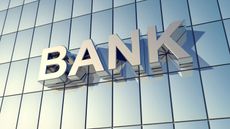Kiplinger Inflation Outlook: Inflation Eases a Bit for the First Time This Year
A Federal Reserve interest rate cut is still unlikely before November, but July can’t be ruled out yet.

Kiplinger’s Economic Outlooks are written by the staff of our weekly Kiplinger Letter and are unavailable elsewhere. Click here for a free issue of The Kiplinger Letter or to subscribe for the latest trends and forecasts from our highly experienced Kiplinger Letter team.
Inflation eased slightly in April — the first time this year that has happened. Overall inflation edged down to 3.4% and slipped to 3.6% when you exclude food and energy costs. Inflation in services, a Federal Reserve focus, slowed modestly, helped by flat costs of motor vehicle repairs. Those prices had previously been surging at a 7.6% annual rate. Medical care inflation also eased. The rise in the cost of shelter, a large component of the Consumer Price Index report, slowed only slightly, but it’s still a move in the right direction. Airfares declined. The fly in the ointment was that car insurance premiums are still rising rapidly.
Goods prices, aside from food and energy, declined for the second month, and are down 1.3% over the past year. Prices of new and used vehicles decreased for the third month in a row. Household furnishings prices dropped for the eighth consecutive month. Prices of groceries dipped a bit, the third consecutive month of no increase. They are now up only 1.1% from a year ago. Gasoline prices rose strongly for the third straight month, but available data on May gas prices indicate a flattening for next month’s report.

Sign up for Kiplinger’s Free E-Newsletters
Profit and prosper with the best of expert advice on investing, taxes, retirement, personal finance and more - straight to your e-mail.
Profit and prosper with the best of expert advice - straight to your e-mail.
April’s small progress on inflation means a slim chance the Federal Reserve could cut interest rates at its July 31 meeting, but the odds still favor a first cut at its November 7 meeting, after the election. The Fed is probably hoping that it will be able to cut in July, because then it could follow a pattern of cutting at every other meeting, which would avoid having to cut at its September 18 meeting, during the height of the presidential campaign.
Inflation is likely to be on a slight downward trend this year. We expect that smaller increases in rents will result in a lower inflation rate for shelter costs. This hasn’t shown up much in the broad inflation reports yet, but it should in the near future. Analysts will be focusing on monthly increases in prices since annual inflation numbers for the rest of this year are not likely to dip much below the current rate of 3.4%. That is the result of the relatively soft inflation that took place in the second half of 2023, which will make year-over-year comparisons in the upcoming CPI reports seem like little progress is being made.
Related content

To continue reading this article
please register for free
This is different from signing in to your print subscription
Why am I seeing this? Find out more here

David is both staff economist and reporter for The Kiplinger Letter, overseeing Kiplinger forecasts for the U.S. and world economies. Previously, he was senior principal economist in the Center for Forecasting and Modeling at IHS/GlobalInsight, and an economist in the Chief Economist's Office of the U.S. Department of Commerce. David has co-written weekly reports on economic conditions since 1992, and has forecasted GDP and its components since 1995, beating the Blue Chip Indicators forecasts two-thirds of the time. David is a Certified Business Economist as recognized by the National Association for Business Economics. He has two master's degrees and is ABD in economics from the University of North Carolina at Chapel Hill.
-
 When Is the Perfect Time to Buy Life Insurance?
When Is the Perfect Time to Buy Life Insurance?This is not an easily answered question, other than 'when you’re the youngest and healthiest you can be.' Your occupation, habits and extracurricular activities will also affect your premium.
By Karl Susman, CPCU, LUTCF, CIC, CSFP, CFS, CPIA, AAI-M, PLCS Published
-
 Should You Take the Survivor Option on Your Pension?
Should You Take the Survivor Option on Your Pension?In some cases, you could buy life insurance instead and get a better deal in protecting your spouse. There are some things to keep in mind, though.
By Joe F. Schmitz Jr., CFP®, ChFC® Published
-
 After Decades of Promise, the Virtual Reality Era Has Finally Arrived
After Decades of Promise, the Virtual Reality Era Has Finally ArrivedThe Kiplinger Letter VR is a paradigm shift for consumer technology. The tech has a long road ahead, but amazing hardware already puts the huge potential on full display.
By John Miley Published
-
 AI to Power the Next Generation of Robots
AI to Power the Next Generation of RobotsThe Kiplinger Letter There's increasing buzz that the tech behind ChatGPT will make future industrial and humanoid robots far more capable.
By John Miley Published
-
 The Robots Are Coming... But Not For a While
The Robots Are Coming... But Not For a WhileThe Kiplinger Letter There’s excitement in the tech sector over the potential of humanoid robots, but widespread adoption is likely to be years away.
By John Miley Published
-
 Farmers Face Another Tough Year As Costs Continue to Climb: The Kiplinger Letter
Farmers Face Another Tough Year As Costs Continue to Climb: The Kiplinger LetterThe Kiplinger Letter Farm income is expected to decline for a second year, while costs continue to up-end farm profitability.
By Matthew Housiaux Published
-
 H-1B Work Visa Rules Get a Revamp
H-1B Work Visa Rules Get a RevampThe Kiplinger Letter H-1B visas allow employers to hire high-skilled foreign workers. Regulators have finalized new rules for this visa program following last fall's proposal.
By Matthew Housiaux Published
-
 Woes Continue for Banking Sector: The Kiplinger Letter
Woes Continue for Banking Sector: The Kiplinger LetterThe Kiplinger Letter Regional bank stocks were hammered recently after news of New York Community Bank’s big fourth-quarter loss.
By Rodrigo Sermeño Published
-
 Are College Athletes Employees of Their Schools?: The Kiplinger Letter
Are College Athletes Employees of Their Schools?: The Kiplinger LetterThe Kiplinger Letter A recent ruling has ramifications for labor relations and the unionization of student athletes.
By Sean Lengell Published
-
 Salton Sea Clean Energy and Lithium Project Gets Approval: The Kiplinger Letter
Salton Sea Clean Energy and Lithium Project Gets Approval: The Kiplinger LetterThe Kiplinger Letter California's Salton Sea is due to see the construction of a new lithium extraction and geothermal clean energy power plant.
By Matthew Housiaux Published